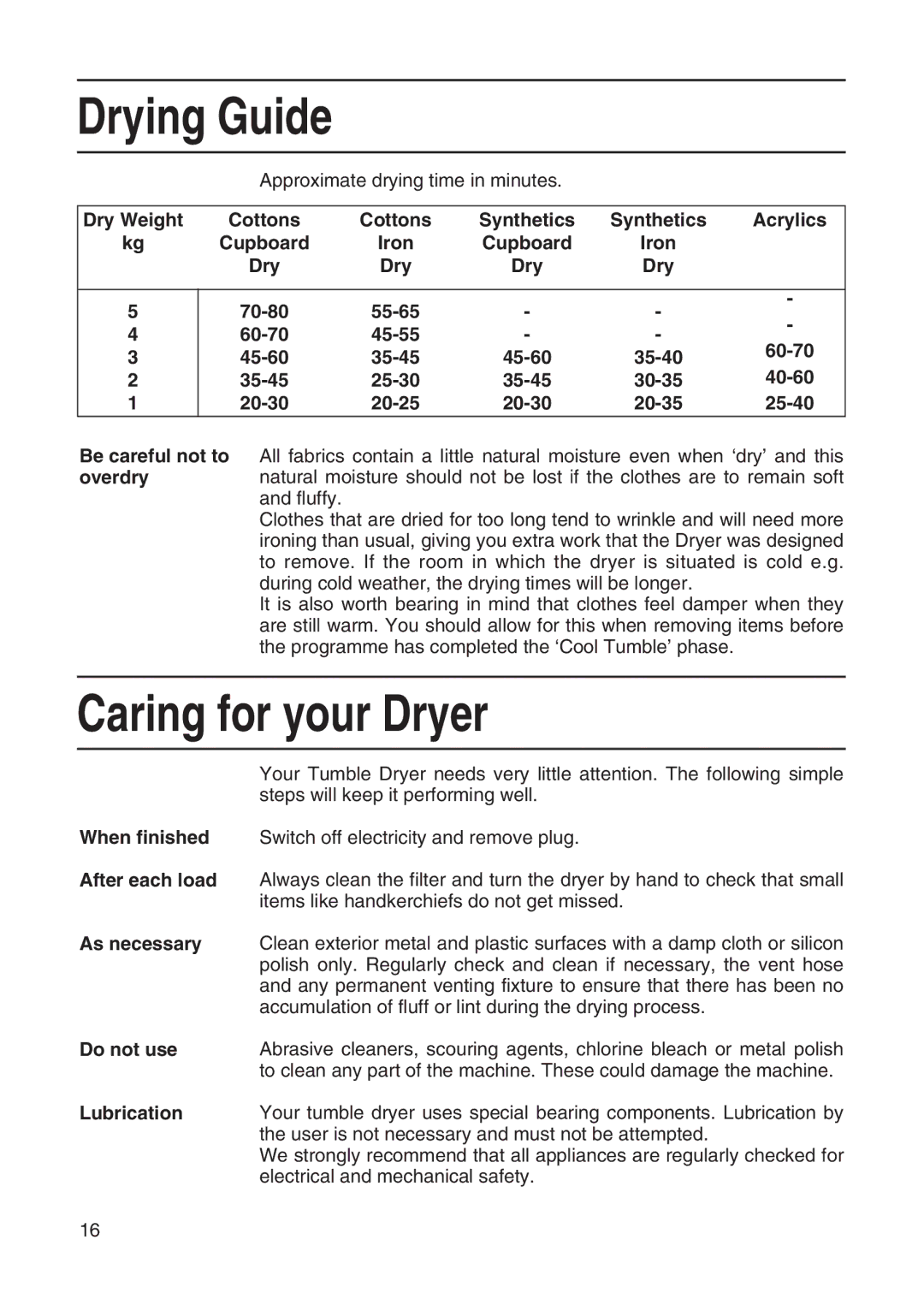
Drying Guide
Approximate drying time in minutes.
Dry Weight | Cottons | Cottons | Synthetics | Synthetics | Acrylics | |
kg | Cupboard | Iron | Cupboard | Iron |
| |
| Dry | Dry | Dry | Dry |
| |
|
|
|
|
|
| |
5 | - | - | - | |||
- | ||||||
4 | - | - | ||||
3 | ||||||
2 | ||||||
1 |
Be careful not to All fabrics contain a little natural moisture even when ‘dry’ and this
overdrynatural moisture should not be lost if the clothes are to remain soft and fluffy.
Clothes that are dried for too long tend to wrinkle and will need more ironing than usual, giving you extra work that the Dryer was designed to remove. If the room in which the dryer is situated is cold e.g. during cold weather, the drying times will be longer.
It is also worth bearing in mind that clothes feel damper when they are still warm. You should allow for this when removing items before the programme has completed the ‘Cool Tumble’ phase.
Caring for your Dryer
| Your Tumble Dryer needs very little attention. The following simple |
| steps will keep it performing well. |
When finished | Switch off electricity and remove plug. |
After each load | Always clean the filter and turn the dryer by hand to check that small |
| items like handkerchiefs do not get missed. |
As necessary | Clean exterior metal and plastic surfaces with a damp cloth or silicon |
| polish only. Regularly check and clean if necessary, the vent hose |
| and any permanent venting fixture to ensure that there has been no |
| accumulation of fluff or lint during the drying process. |
Do not use | Abrasive cleaners, scouring agents, chlorine bleach or metal polish |
| to clean any part of the machine. These could damage the machine. |
Lubrication | Your tumble dryer uses special bearing components. Lubrication by |
| the user is not necessary and must not be attempted. |
| We strongly recommend that all appliances are regularly checked for |
| electrical and mechanical safety. |
16
